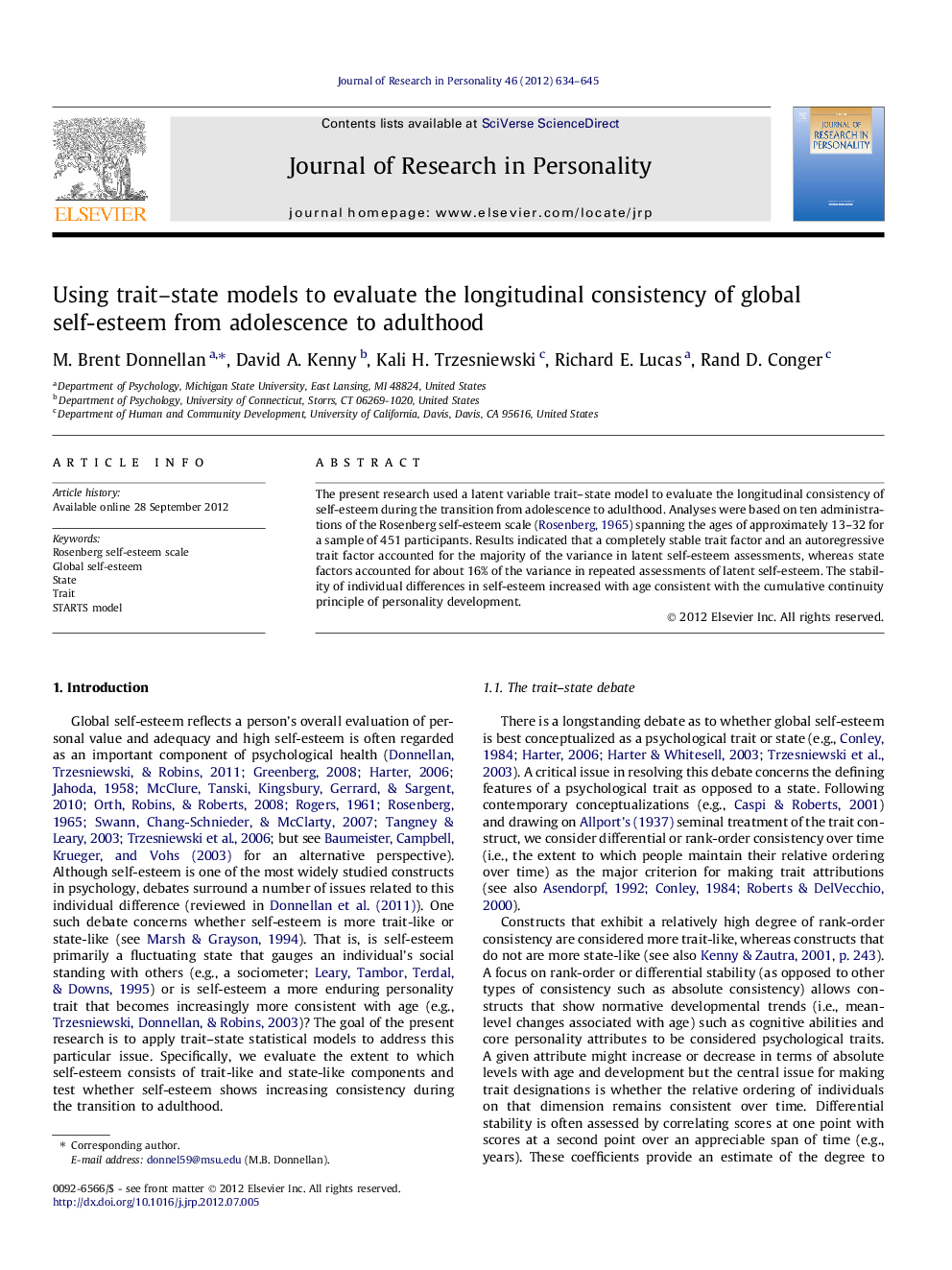| Article ID | Journal | Published Year | Pages | File Type |
|---|---|---|---|---|
| 951475 | Journal of Research in Personality | 2012 | 12 Pages |
The present research used a latent variable trait–state model to evaluate the longitudinal consistency of self-esteem during the transition from adolescence to adulthood. Analyses were based on ten administrations of the Rosenberg self-esteem scale (Rosenberg, 1965) spanning the ages of approximately 13–32 for a sample of 451 participants. Results indicated that a completely stable trait factor and an autoregressive trait factor accounted for the majority of the variance in latent self-esteem assessments, whereas state factors accounted for about 16% of the variance in repeated assessments of latent self-esteem. The stability of individual differences in self-esteem increased with age consistent with the cumulative continuity principle of personality development.
► The consistency of self-esteem from age 13 to age 32 was evaluated. ► Latent trait–state models quantified how much state variance was contained in self-esteem. ► Stable and relatively factors accounted for the majority of the variance in longitudinal assessments of self-esteem.
